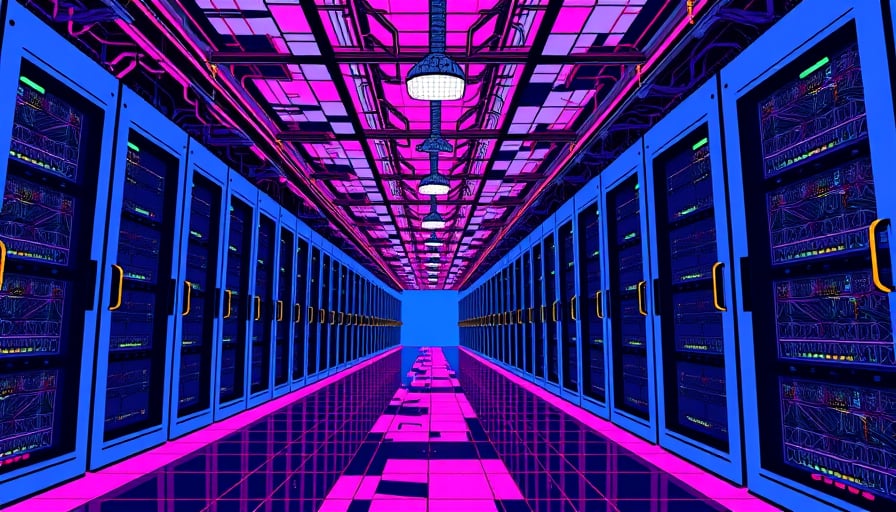Western Digital’s Quest for Consistent Outperformance in a Shifting Hardware Landscape
Western Digital Corp (WDC) remains a benchmark for resilience in the technology‑hardware sector, yet its recent trajectory underscores a broader tension between legacy storage operations and the accelerating demands of cloud‑centric and artificial‑intelligence (AI) infrastructures. Analysts have flagged uncertainty around WDC’s ability to translate market growth into sustained earnings, prompting a closer look at the firm’s strategic positioning, competitive dynamics, and the macroeconomic forces that shape the sector.
1. Sector Dynamics: From Consumer Drives to Enterprise‑Grade Solutions
The storage industry has historically been driven by two complementary streams:
| Segment | Traditional Drivers | Emerging Drivers |
|---|---|---|
| Consumer SSDs & External Drives | Personal computing, gaming, media consumption | Rise in remote work, home entertainment, and 5G‑enabled devices |
| Enterprise & Cloud Storage | Data center expansion, virtualization | Cloud migration, edge computing, AI/ML workloads |
Western Digital’s portfolio spans both consumer and enterprise products, yet the latter now dominates revenue prospects. While the consumer market has plateaued in terms of unit volume, the enterprise market is expanding as organizations shift data to the cloud and seek higher density, lower‑power storage solutions. AI and machine‑learning workloads, in particular, demand high throughput and low latency, driving a shift toward NVMe‑over‑fabric and 3D‑stacked memory technologies.
2. Competitive Positioning and Innovation Trajectory
In the highly fragmented hardware market, differentiation hinges on a few key levers:
- Technology Leadership – WDC’s acquisition of SanDisk in 2016 expanded its NAND flash expertise, while its recent focus on 3D XPoint and NVMe‑SSD development signals an intent to stay at the frontier of speed‑density trade‑offs.
- Economies of Scale – As a global supplier, WDC benefits from a vast manufacturing footprint that enables cost efficiencies relative to niche players such as Seagate (conventional HDD) and newer entrants like NetApp’s FlashArray.
- Ecosystem Partnerships – Collaborations with cloud providers (AWS, Azure, Google Cloud) and AI platform vendors (NVIDIA, Intel) are critical to embed WDC’s solutions into data‑center workflows.
Despite these strengths, WDC’s competitive edge is eroding in two dimensions:
- Price Sensitivity: The commoditization of SSDs has narrowed margins. Competitors that can reduce unit cost via advanced packaging or supply chain optimization are gaining share.
- Speed‑Density Race: The push for higher throughput (e.g., 1 TB/s) outpaces WDC’s current product mix. Rivals like Samsung and Micron have aggressively advanced 7 nm and 5 nm process nodes, improving both performance and power efficiency.
3. Financial Implications of Market Volatility
Over the past year, WDC’s share price has fluctuated by more than 30 %, mirroring the broader technology hardware volatility observed across the S&P 500. Key financial metrics illustrate the underlying pressures:
- Revenue Growth: Flat or slightly negative growth in the consumer segment is offset by modest gains in the enterprise space, but the high capital expenditures required for new fabrication lines dampen short‑term profitability.
- Gross Margin: Margins have trended downward from 30 % to 27 % in the last fiscal year, reflecting increased raw‑material costs (silicon, lithium) and intensified price competition.
- Capital Expenditure (CapEx): Planned CapEx of $3.2 billion in FY 2025 earmarked for new 7 nm production lines and advanced packaging facilities represents a substantial commitment that could strain cash flows if revenue projections fall short.
These financial dynamics explain the cautious investor sentiment that has kept the S&P 500’s gains modest despite a generally optimistic outlook for the technology sector.
4. Macro‑Economic Context and Cross‑Industry Synergies
Western Digital’s challenges are not isolated to hardware. The broader macro‑economic environment influences its prospects in several ways:
- Interest Rates: Higher rates can dampen capital‑intensive cloud‑infrastructure projects, reducing enterprise spending on new storage arrays.
- Supply Chain Resilience: The global chip shortage, though easing, still affects component availability and pricing, particularly for advanced packaging and silicon wafers.
- Digital Transformation Momentum: Companies investing in digital twins, IoT, and edge analytics are creating new storage requirements that span both on‑premise and cloud‑based solutions. WDC’s ability to embed itself into these emerging workflows will determine its long‑term relevance.
Cross‑industry synergies also present opportunities. For instance, automotive manufacturers deploying autonomous vehicles generate vast data streams that need secure, high‑throughput storage solutions. Collaboration with automotive suppliers and sensor manufacturers could open a new revenue stream for WDC, leveraging its expertise in high‑density, low‑power memory.
5. Outlook and Strategic Recommendations
Given the confluence of competitive pressures and macro‑economic variables, Western Digital’s path forward should prioritize:
- Accelerated Innovation Pipeline: Shortening the time from research to market launch for NVMe‑over‑fabric and AI‑optimized storage will mitigate margin erosion.
- Cost‑Optimization Programs: Implement lean manufacturing practices and negotiate tiered supply contracts to protect margins.
- Strategic Alliances: Deepen partnerships with cloud service providers and AI platform vendors to secure long‑term procurement contracts.
- Portfolio Realignment: Gradually reduce exposure to commoditized consumer SSDs while expanding presence in high‑margin enterprise and edge storage segments.
By addressing these strategic imperatives, Western Digital can enhance its competitive positioning, stabilize earnings, and better align with the evolving demands of the cloud‑first, AI‑driven economy.
